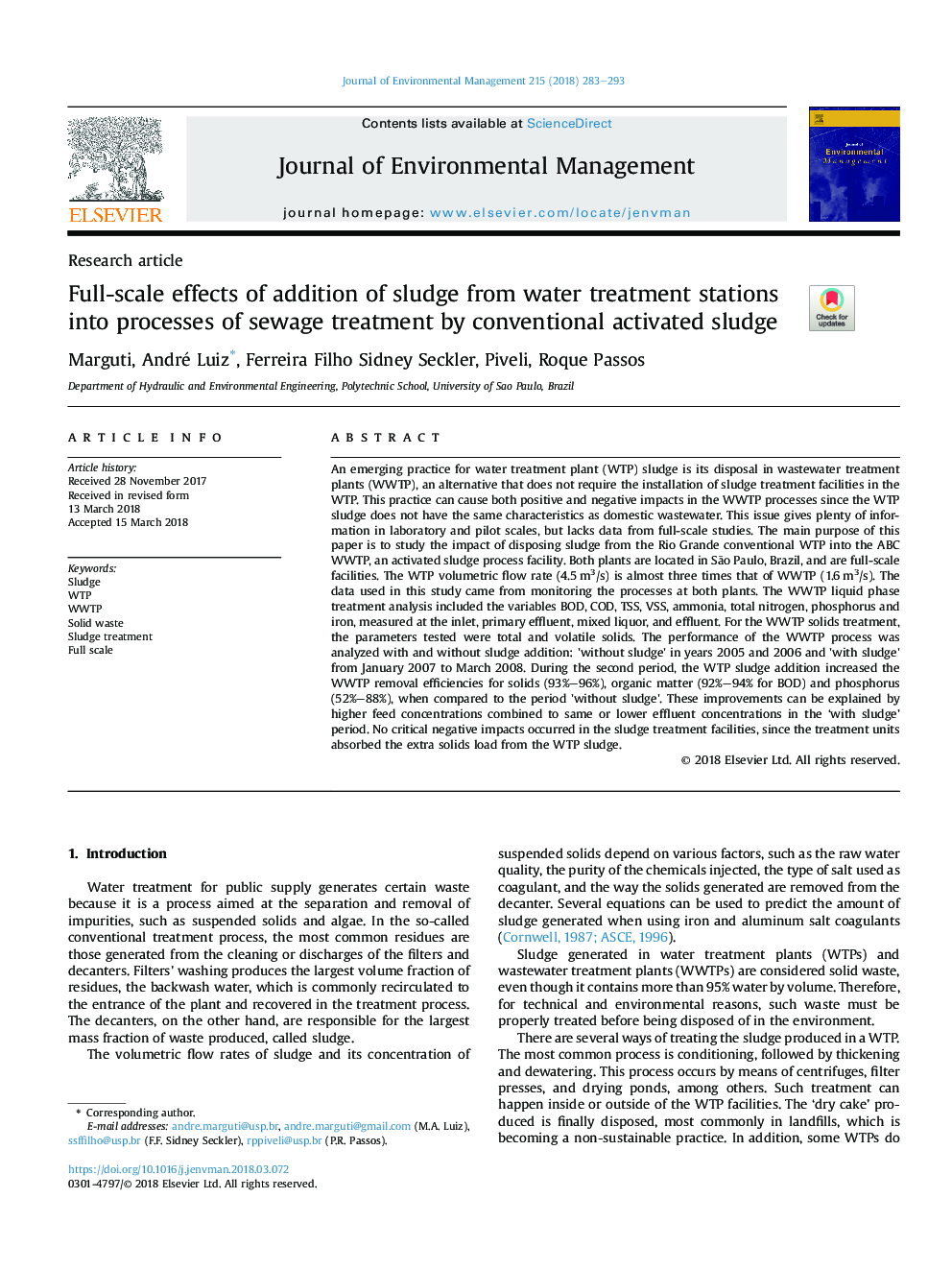| کد مقاله | کد نشریه | سال انتشار | مقاله انگلیسی | نسخه تمام متن |
|---|---|---|---|---|
| 7477734 | 1485203 | 2018 | 11 صفحه PDF | دانلود رایگان |
عنوان انگلیسی مقاله ISI
Full-scale effects of addition of sludge from water treatment stations into processes of sewage treatment by conventional activated sludge
ترجمه فارسی عنوان
اثرات کامل لجن از ایستگاه های تصفیه آب به فرایندهای تصفیه فاضلاب با لجن فعال معمولی
دانلود مقاله + سفارش ترجمه
دانلود مقاله ISI انگلیسی
رایگان برای ایرانیان
کلمات کلیدی
موضوعات مرتبط
مهندسی و علوم پایه
مهندسی انرژی
انرژی های تجدید پذیر، توسعه پایدار و محیط زیست
چکیده انگلیسی
An emerging practice for water treatment plant (WTP) sludge is its disposal in wastewater treatment plants (WWTP), an alternative that does not require the installation of sludge treatment facilities in the WTP. This practice can cause both positive and negative impacts in the WWTP processes since the WTP sludge does not have the same characteristics as domestic wastewater. This issue gives plenty of information in laboratory and pilot scales, but lacks data from full-scale studies. The main purpose of this paper is to study the impact of disposing sludge from the Rio Grande conventional WTP into the ABC WWTP, an activated sludge process facility. Both plants are located in São Paulo, Brazil, and are full-scale facilities. The WTP volumetric flow rate (4.5â¯m³/s) is almost three times that of WWTP (1.6â¯m³/s). The data used in this study came from monitoring the processes at both plants. The WWTP liquid phase treatment analysis included the variables BOD, COD, TSS, VSS, ammonia, total nitrogen, phosphorus and iron, measured at the inlet, primary effluent, mixed liquor, and effluent. For the WWTP solids treatment, the parameters tested were total and volatile solids. The performance of the WWTP process was analyzed with and without sludge addition: 'without sludge' in years 2005 and 2006 and 'with sludge' from January 2007 to March 2008. During the second period, the WTP sludge addition increased the WWTP removal efficiencies for solids (93%-96%), organic matter (92%-94% for BOD) and phosphorus (52%-88%), when compared to the period 'without sludge'. These improvements can be explained by higher feed concentrations combined to same or lower effluent concentrations in the 'with sludge' period. No critical negative impacts occurred in the sludge treatment facilities, since the treatment units absorbed the extra solids load from the WTP sludge.
ناشر
Database: Elsevier - ScienceDirect (ساینس دایرکت)
Journal: Journal of Environmental Management - Volume 215, 1 June 2018, Pages 283-293
Journal: Journal of Environmental Management - Volume 215, 1 June 2018, Pages 283-293
نویسندگان
Marguti, André Luiz, Ferreira Filho Sidney Seckler, Piveli, Roque Passos,
